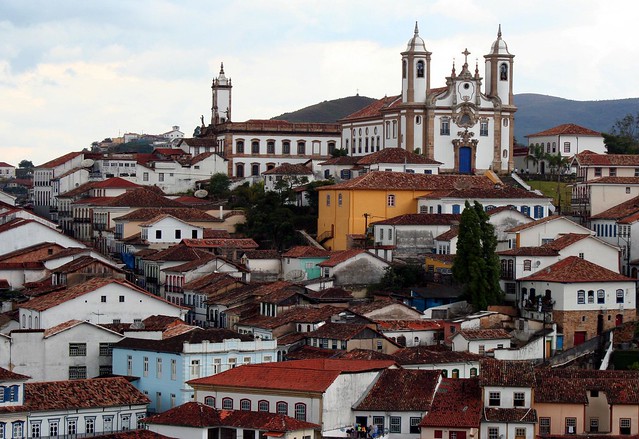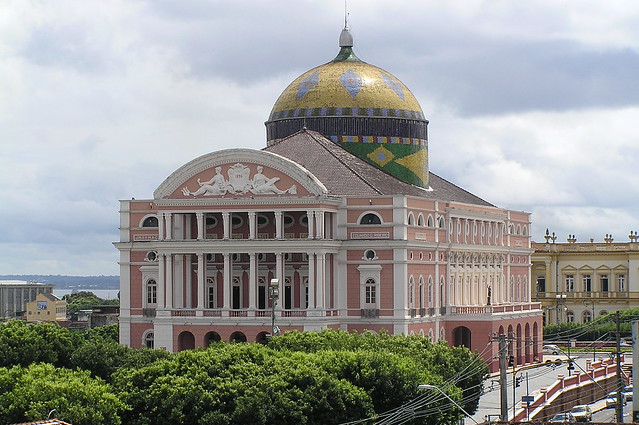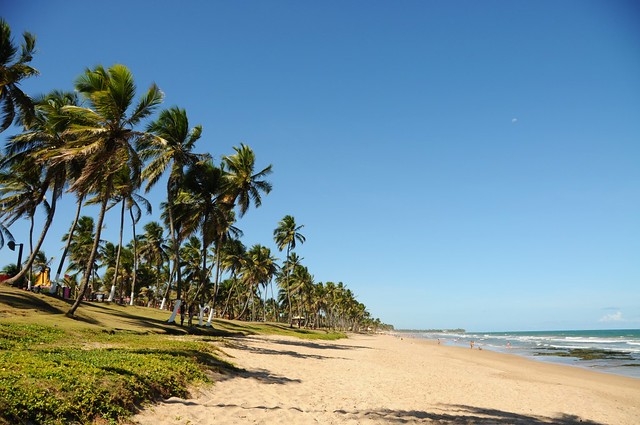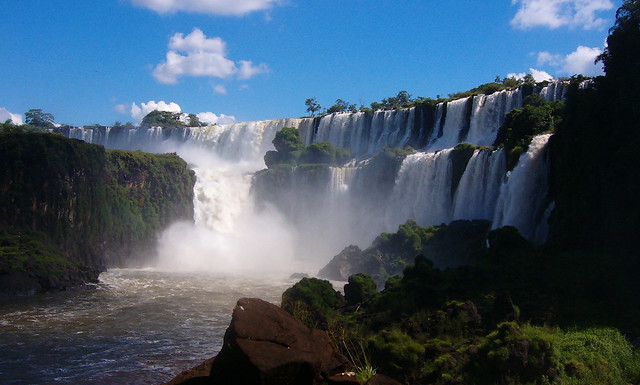Tourist Attractions in Brazil
Sprawling
across half of South America, Brazil is the fifth largest country in
the world. White-sand beaches, tropical islands, music-filled
metropolises and charming colonial towns are dotting its 7,500 km (4,600
mi) long coastline. Inland, Brazil tourist attractions consist of
imposing waterfalls, wetlands filled with wildlife, and the untouched
wilderness of the Amazon rainforest where several isolated tribes still
live without any contact with the rest of the world.
The top
tourist attractions in Brazil:
10Ouro Preto
One of Brazil’s best-preserved colonial towns,
Ouro Preto,
meaning “black gold”, was founded at the end of the 17th century. It
quickly became the epicenter of a new gold rush in the state of Minas
Gerais. The city contains well preserved Portuguese colonial
architecture, while modern buildings must adhere to historical standards
maintained by the city. 18th- and 19th-century churches decorated with
gold and the sculptured works of Aleijadinho make Ouro Preto one of the
most popular tourist attractions in Brazil.
9Teatro Amazonas
Teatro
Amazonas or Amazon Theatre is an opera house located in Manaus, in the
heart of the Amazon Rainforest. It was built during the heyday of rubber
trade using materials from all over the world, with furniture from
Paris, marble from Italy, and steel from England. On the outside of the
building, the dome was covered with 36,000 decorated ceramic tiles
painted in the colors of the Brazilian national flag.
The first
performance was given on January 7, 1897, with the Italian opera La
Gioconda. The opera house was closed down soon after however as the
rubber trade declined and Manaus lost its main source of income. There
wasn’t a single performance in Teatro Amazonas for 90 years until 2001
when it reopened its doors.
8Fernando de Noronha
Fernando de Noronha
is a beautiful archipelago with pristine beaches, landscapes and
wildlife, situated 354 km (220 miles) off the northeastern coast in
Brazil. The archipelago was discovered by Amerigo Vespucci in 1503 and
temporarily occupied by the Dutch and French before Portugal established
dominion in 1737. Today only the largest of the 21 islands is inhabited
with a population of about 3,500. The islands are a Mecca for divers
and snorkelers with warm waters year-round and very good visibility even
at depths of 50 meters.
7Historic Center of Olinda
Another well preserved colonial city,
Olinda
is located on the Brazil’s northeastern coast, just north of Recife.
Olinda features a number of major touristic attractions, such as a
historic downtown area, churches, and the famous Carnival of Olinda.
Many bars, restaurants, artist and craftspeople studios add charm to the
old-town setting.
6Salvador Beaches
Salvador
is the capital of the state of Bahia, with an attractive colonial town,
a vibrant musical scene and loads of exceptional beaches all around.
The beaches range from calm inlets, ideal for swimming, diving and
sailing, as well as open sea inlets with strong waves, popular with
surfers. There are also beaches surrounded by reefs, forming natural
pools of stone, ideal for children.
5Pantanal
The
Pantanal
is the world’s largest wetland, lying mostly in Western Brazil but
extending into Bolivia and Paraguay as well. Famous for its wildlife, it
is one of Brazil’s major tourist attractions. Unlike the Amazon
rainforest, in the Pantanal you are virtually guaranteed to actually see
the wildlife. Capybara and the Yacare Caiman are present in the
millions. The Pantanal is also home to one of the largest Jaguar
populations in the Americas.
4Rio Carnival
There
are carnival celebrations in virtually every corner of Brazil, the
best-known ones taking place in Recife together with the neighboring
Olinda and Salvador. But the biggest and most famous carnival is
undoubtedly the Carnival in Rio de Janeiro. The Rio Carnival attracts
two million people per day on the streets and almost half a million
foreigners during its 4 day celebration. The Carnival is all over the
place, in the streets and squares, bars, clubs and all other venues in
Rio, concluding in the spectacular Rio Samba Parade at the Sambadrome.
3Amazon River
At
approximately 6,400 km (4,000 miles) the Amazon River is the second
longest river in the world, just slightly shorter than the Nile, and the
largest river by volume. The Amazon has over 3,000 recognized species
of fish and new species are still being discovered. The Amazon Basin is
covered by half of the planet’s remaining rainforests. Although a tenth
of the world’s estimated 10 million living species live in the Amazon
rainforest, jungle tours are more about the boating upriver into the
damp, buzzing, oppressive ambience than actually spotting animals.
2Iguazu Falls
One of the great natural wonders of the world,
Iguaçu Falls
is situated on the border between Brazil and Argentina. The waterfall
system consists of 275 falls along the Iguazu River. The most impressive
of them all is the Devil’s Throat a U-shaped with a height of 82 meter
(269 ft). The falls can be reached from the cities Foz do Iguaçu in
Brazil and Puerto Iguazú in Argentina, as well as from Ciudad del Este
in Paraguay. On the Brazilian side there is a long walkway along the
canyon with an extension to the lower base of the Devil’s Throat.
1Christ the Redeemer
Christ the Redeemer
is the famous statue of Jesus Christ in Rio de Janeiro. Located at the
peak of the 700 meters (2,300 ft) Corcovado mountain, it provides a
sweeping panorama from the interior of Guanabara bay to the north, to
Lagoa Rodrigo de Freitas to the south. The Christ the Redeemer statue
stands 39.6 meters (130 ft) tall, including its 9.5 meters (31 ft)
pedestal and has become an icon of Rio and Brazil.
 flickr/jschneid
flickr/jschneid flickr/Papa Goiaba
flickr/Papa Goiaba flickr/Andras Jancsik
flickr/Andras Jancsik flickr/Prefeitura de Olinda
flickr/Prefeitura de Olinda flickr/karolajnat
flickr/karolajnat flickr/pete_bug
flickr/pete_bug flickr/Marcus Correa
flickr/Marcus Correa flickr/leoffreitas
flickr/leoffreitas flickr/Feffef
flickr/Feffef flickr/Arthur Boppre
flickr/Arthur Boppre
No comments:
Post a Comment